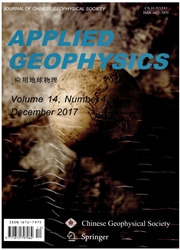

 中文摘要:
中文摘要:
在地震勘探数据采集中,随机噪声严重影响地震资料质量,给后期解释工作带来很大困难。如何在不损失剖面有效信息的前提下压制随机噪声,有效地提高地震资料的信噪比和保真度,是本文的研究目标。构造导向滤波技术的核心是构造方向表征的求取以及如何实现非平稳滤波,来达到提高地震数据信噪比和保真度的目的。本文首先通过分析函数二维导数与希尔伯特变换的频率响应关系,推导出了基于二维希尔伯特变换的非迭代地震同相轴倾角求取算子,进而达到了构造方向表征的求取;其次选取多项式拟合作为构造导向滤波中的非平稳滤波方法,扩展了非平稳多项式拟合的应用范围;最后沿构造倾角方向进行变振幅同相轴的非平稳多项式拟合,实现和构建了新的自适应构造导向滤波方法。理论模型和实际地震资料处理的结果表明,所提出的方法实现了既保护构造信息又有效地压制了随机噪声的目的。
 英文摘要:
英文摘要:
In seismic data processing, random noise seriously affects the seismic data quality and subsequently the interpretation. This study aims to increase the signal-to-noise ratio by suppressing random noise and improve the accuracy of seismic data interpretation without losing useful information. Hence, we propose a structure-oriented polynomial fitting filter. At the core of structure-oriented filtering is the characterization of the structural trend and the realization of nonstationary filtering. First, we analyze the relation of the frequency response between two-dimensional(2D) derivatives and the 2D Hilbert transform. Then, we derive the noniterative seismic local dip operator using the 2D Hilbert transform to obtain the structural trend. Second, we select polynomial fitting as the nonstationary filtering method and expand the application range of the nonstationary polynomial fitting. Finally, we apply variableamplitude polynomial fitting along the direction of the dip to improve the adaptive structureoriented filtering. Model and field seismic data show that the proposed method suppresses the seismic noise while protecting structural information.
 同期刊论文项目
同期刊论文项目
 同项目期刊论文
同项目期刊论文
 期刊信息
期刊信息
